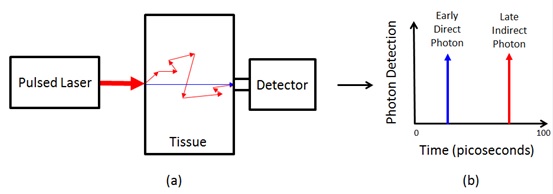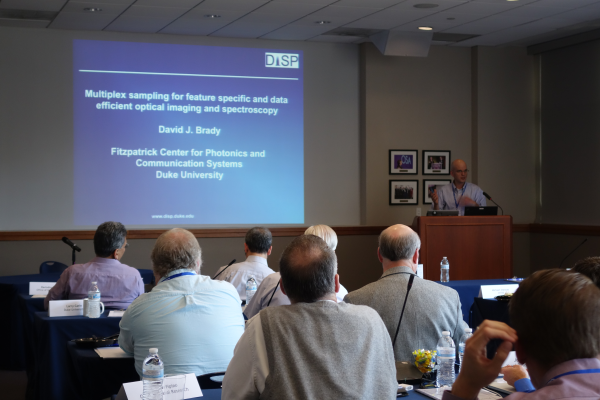April 2014
Seeing the blood flow that helps us see
The quality of the posters at the the OSA biomedical optics conference this year has been exceptionally high and over the last three days I came across a number of projects that warranted highlighting in the blog. Some of these include the work of Jessica Kishimoto and Prof. Keith St. Lawrence at Western University on the application of diffuse correlation spectroscopy and ultrasound imaging to...
Added: 30 Apr 2014
Optical Tomographers Beware!
To all of you optical tomography researchers reading this: admit it, you’re a bit of a gadget geek. The last thing you want is to let your expensive, fancy equipment come into contact with your imaging subjects, especially animals. That’s the real reason why you keep building all of your systems in “non-contact” geometries. Well, according to Shelley Taylor from Prof....
Added: 30 Apr 2014
The integration of optical technologies to manipulate and monitor biological samples
This morning at the BIOMED meeting, there were back-to-back talks in the Optical Molecular Biophysics / Neurophotonics session that highlighted the unique insights that can be obtained by integrating different optical technologies. Anna-Karin Gustavsson from Dr. Caroline Adiels group gave an interesting talk that integrated multifluidics, optical trapping, and NADH autofluorescence measurements...
Added: 29 Apr 2014
Speeding up multi-photon microscopy
As someone with strong research interests in multiphoton microscopy (MPM), I was excited to hear Dr. Peter So’s plenary talk on Day 3 of the BIOMED meeting. Dr. So provided an overview of the development of his multiphoton tissue cytometry equipment over the years, and its applications in neurobiology. MPM has emerged as key tool in neuroscience to non-invasively image deeper within...
Added: 29 Apr 2014
The OSA BIOMED Meeting Day 1: Things are heating up in Miami
Greetings from Miami! BIOMED has gotten off to great start with a pair of plenary talks by Dr. Xingde Li and Dr. Adam Wax. As I mentioned in a previous post, Dr. Li has been developing and refining endomicroscopic probes to facilitate non-linear optical...
Added: 28 Apr 2014
The Binding Finding of a Fluorescence Lifetime
In this afternoon’s session on Luminescence and Absorption on Cellular and Tissue Levels, Prof. Victor Chernomordik gave an overview of the extensive work he and his colleagues have been undertaking to make fluorescence molecular imaging more quantitative. Much of their work has focused specifically on how to quantify human epidermal growth factor receptor 2 (HER2...
Added: 27 Apr 2014
The Early Photon Gets the Worm
One of the biggest problems with using light to analyze biological tissue is that photons in the visible and near-visible spectrum have a very high probability of scattering multiple times as they propagate through the tissue. This is a well-known problem that restricts high-resolution optical microscopy to tissue thicknesses of only a few microns. It has also led researchers to develop...
Added: 25 Apr 2014
Are You Being Heard in the Optics and Photonics Community?
In case you missed it - International Women’s Day comes about in March every year, and much like many years there was bit of hype around it. The occasion is used by various women’s organisations, policymakers and governments to raise awareness of issues connected to women. The media is an important component in this ever-growing to-do. And commerce is never far behind in...
Added: 21 Apr 2014
Incubator meeting, Honest meeting
The essence of this Incubator, as one host Mark Neifeld put it, is: honest effort to solve practical problems. The hosts repeatedly called on all attendees to have honest and candid discussions. The purpose of this meeting was truly to look for opportunities within CS and was cleverly structured to give pro and con views of those opportunities. This lead to open and frank discussions...
Added: 11 Apr 2014
Collaboration is the Key
A major part of the meeting are the breakout group discussions. Participants were assigned to one of five potential application areas: Commercial Security Cameras for use in Homes, Businesses, Stadiums or Airports; UAV Surveillance Imaging; Near IR Imaging for Intra-cranial Bleeding Detection and Localization; Soldier-scale Situational Awareness; and Astronomical Imaging Applications.
Added: 11 Apr 2014


1-resized-600.jpg?t=635838851710809120)
